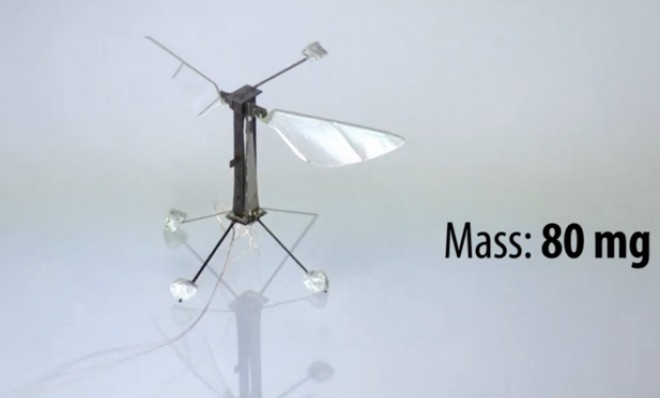WATCH: The world's tiniest flying robot takes off
Say hi to fly-bot

The lowly housefly, believe it or not, represents one of the robotics world's more elusive brass rings. The insects can hover, pivot on a dime, and maneuver in ways our finest aircraft can only dream about, and their tiny size has made them nearly impossible for engineers to replicate.
While we've seen our fair share of fly-like robots before, they're usually much bigger. Furthermore, the biomimicry — how scientists mechanically approximate an animal's movements — was always a bit off.
Now, thanks to new laser-cutting techniques and lightweight construction materials — as well as over a decade of trial and error — a team from the Harvard School of Engineering and Applied Sciences has successfully pieced together a buzzing, penny-sized robot capable of taking flight.
The Week
Escape your echo chamber. Get the facts behind the news, plus analysis from multiple perspectives.

Sign up for The Week's Free Newsletters
From our morning news briefing to a weekly Good News Newsletter, get the best of The Week delivered directly to your inbox.
From our morning news briefing to a weekly Good News Newsletter, get the best of The Week delivered directly to your inbox.
"As far as we can tell, this is the world's smallest flying robot," Kevin Ma, a graduate student at Harvard and member of the robotics team, told NBC. With just a 3 cm-wide wingspan, the fly-bot's wings imitate the full range and motion of a housefly and beat 120 times per second — just like the real thing.
Piecing together such a "tiny yet complex frame" presented a unique manufacturing challenge to researchers. As Wired reports, the team overcame this obstacle with a little unlikely inspiration... from children's pop-up books:
The idea is to layer-up the different flexible laser-cut materials, each joined together by flexible hinges. It creates a kind of scaffold that will pop-up into place once lifted apart with pins. Before hand, the team was gluing each tiny piece and each tiny joint into place by hand — a virtually impossible task. [Wired]
To mimic a biological fly's fluttering wings, the team relied on piezoelectric materials, which contract whenever an electrical current is applied. By rapidly switching the voltage on and off, "we get it to contract and relax, like a biological muscle," Ma told Fast Company.
For now, at least, a current must still be supplied by a tether, but the fly-bot's creators are optimistic about their design's future, which they believe has applications for search-and-rescue missions, environmental monitoring, and agriculture. (Imagine swarms of tiny drones programmed to pollinate.)
A free daily email with the biggest news stories of the day – and the best features from TheWeek.com
And here's an unsettling thought: In about 30 years, says lead researcher Robert J. Wood, expect the flittering robo-bugs to come loaded with their own, pre-programmed brains.
-
 Pakistan: Trump’s ‘favourite field marshal’ takes charge
Pakistan: Trump’s ‘favourite field marshal’ takes chargeIn the Spotlight Asim Munir’s control over all three branches of Pakistan’s military gives him ‘sweeping powers’ – and almost unlimited freedom to use them
-
 Codeword: December 6, 2025
Codeword: December 6, 2025The daily codeword puzzle from The Week
-
 Sudoku hard: December 6, 2025
Sudoku hard: December 6, 2025The daily hard sudoku puzzle from The Week